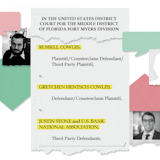Sure, Carl A. Dahlquist was a pioneer in adhesive research and a member of 3M's prestigious Carlton Society, which has recognized the Maplewood-based company's most-distinguished scientists since 1963.
The North Oaks resident, who died March 31 at the age of 102, even has a scientific principle named after him — the Dahlquist Criterion, used to measure the tackiness of adhesives. He also had nine patents assigned to his name and wrote more than 20 technical papers.
But a colleague characterized Dahlquist's career more succinctly: He brought tape out of the dark ages.
Dahlquist's research made it easier to unroll Scotch tape without it sticking, just one of his contributions to scientific discoveries and advances that helped build 3M into the $30 billion powerhouse it is today.
But Dahlquist, who was born in rural Kanabec County of modest means and of Swedish descent, was never one to boast. "If you met him, you'd find [him] to be a little reserved, very polite — a real gentleman," said Morgan Tamsky, a 3M retiree who worked for Dahlquist.
Dahlquist enrolled at the University of Minnesota in 1930 at the age of 16, intent on studying chemical engineering. He studied bacteriology while working at a state operation overseeing canneries, ultimately earning an engineering degree, as well as a double minor in physical chemistry and in microbiology.
He was first hired in 1943 in 3M's Central Research Department, assessing the elasticity and viscosity of pressure-sensitive adhesives. He then moved on to measure the adhesion of tape on all sorts of surfaces.
"Carl was the first researcher to clearly examine the connection between the physical properties of pressure sensitive adhesives and their performance," said Dave Yarusso, 3M corporate scientist. "His meticulous research using techniques that were groundbreaking for that time helped him identify a universal criterion for the 'softness' of the adhesive material in order for it to be tacky.



